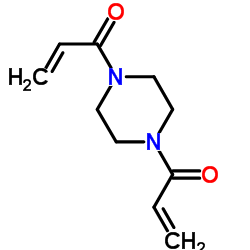An update on conformation sensitive gel electrophoresis.
Arupa Ganguly
文献索引:Hum. Mutat. 19(4) , 334-42, (2002)
全文:HTML全文
摘要
Conformation-sensitive gel electrophoresis (CSGE) was developed as a method of heteroduplex analysis to screen large multi-exon genes for sequence variation. The novelty of the method was in the use of a non-proprietary acrylamide gel matrix that used 1,4-bis (acrolyl) piperazine (BAP) as a cross linker with ethylene glycol and formamide as mildly denaturing solvents. The denaturing environment enhances the conformation polymorphism present in DNA heteroduplexes containing variations as small as single nucleotide polymorphisms (SNPs). CSGE has also been adapted for use on a fluorescent platform (F-CSGE) that resulted in higher throughput and sensitivity. Variation in sensitivity of CSGE has been studied extensively. The results demonstrate that the nature of the mismatched base in a defined sequence context has the most profound effect on the conformation of the heteroduplex. Additionally, the size of the PCR product, as well as the location of the mismatch within the PCR product, are two important parameters that determine the resolution of the mismatch-containing heteroduplexes during CSGE. Like any other mutation scanning technique, CSGE can have limited resolution of two closely linked sequence variations. For specific genes, like BRCA1 and BRCA2 where multiple SNPs are present in the coding sequence, each CSGE shift has to be sequenced to define the exact nature of the sequence change. In conclusion, CSGE scanning provides a powerful, cost-efficient way to scan genes with high sensitivity and specificity.Copyright 2002 Wiley-Liss, Inc.
相关化合物
| 结构式 | 名称/CAS号 | 分子式 | 全部文献 |
|---|---|---|---|
 |
1,4-二丙烯酰基哌嗪
CAS:6342-17-2 |
C10H14N2O2 |
|
Peroxiredoxin I protein, a potential biomarker of hydronephr...
2014-06-01 [J. Pediatr. Urol. 10(3) , 474-81, (2014)] |
|
Urine proteome analysis in Dent's disease shows high selecti...
2016-01-01 [J. Proteomics 130 , 26-32, (2015)] |
|
ECM stiffness primes the TGFβ pathway to promote chondrocyte...
2012-09-01 [Mol. Biol. Cell 23 , 3731-42, (2012)] |
|
Application of MeCAT-Click labeling for protein abundance ch...
2016-03-16 [J. Proteomics 136 , 68-76, (2016)] |
|
Methods for increasing the resolution of two-dimensional pro...
1988-09-01 [Anal. Biochem. 173 , 424, (1988)] |